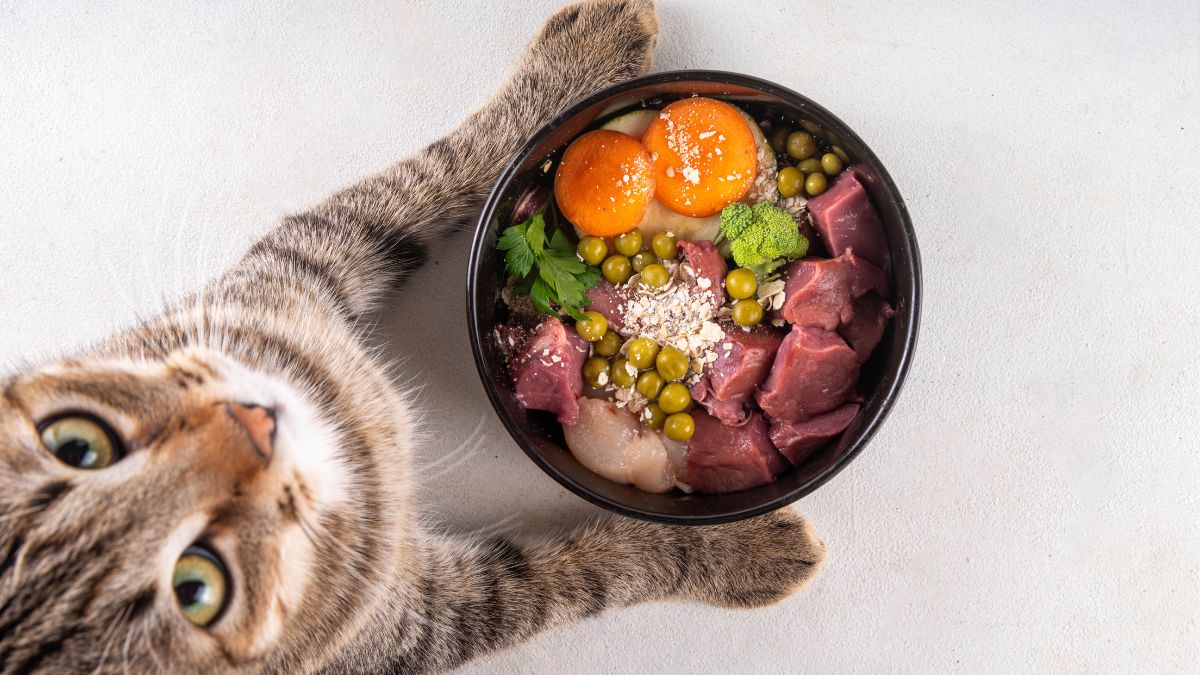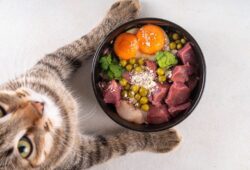
In the past decade, the global pet food market has become one of the fastest-growing industries within the consumer sector. Through a combination of factors such as the humanization of pets, diversification of product portfolios, and the rise of e-commerce, this category has reached record figures. According to the Pet Food Market Worldwide report by Statista, global pet food sales will close the year at approximately $151.8 billion USD, nearly double the figure recorded in 2019, when it reached $93.9 billion USD.
READ ALSO. CONFIRMED! Wednesday season 2 premieres on Netflix this time
How much has the global pet food market grown in the last decade?
The sector’s growth is significant: in 2010, global sales stood at $59.3 billion USD, implying a growth of more than 150% in fourteen years. Between 2022 and 2024 alone, sales increased from $123.6 to $151.8 billion USD, showing an accelerated and steady pace.
The growth projection continues: Statista estimates that by 2030, the market will maintain a positive rhythm, with annual revenue increases of up to 7.54%, after a period of slight slowdowns between 2027 and 2028.
READ ALSO. Is Sydney Sweeney a Republican? Trump Praises American Eagle Ad
Which countries lead in pet food consumption and spending?
The United States accounts for nearly 40% of the total global market value, with estimated revenues of $59.7 billion USD in 2024. This means its business volume is over seven times larger than China’s, which holds second place with $8.2 billion.
The global top 5 is completed by:
- United Kingdom ($7.46 billion USD)
- Brazil ($6.87 billion USD)
- Germany ($5.86 billion USD)
A surprising fact is that Argentina leads in per capita pet food consumption, with 52 kg per person in 2024, even surpassing the U.S. (47.95 kg) and Australia (42.08 kg). This figure reflects the high penetration of pets in Argentine households and their emotional and social role.
Which brands dominate the global market?
The Statista report also details that the top five pet food brands in the world are based in the United States. The two giants of the sector are:
- Nestlé Purina PetCare: with revenues of $22.45 billion USD
- Mars Petcare Inc.: with $22 billion USD
Both lead in innovation, broad portfolios, and strong international presence. They are followed by Hill’s Pet Nutrition, General Mills, and J.M. Smucker.
In Europe, United Petfood (Belgium) and Partner in Pet Food (Hungary) are the largest manufacturers, while in Latin America, BRF Pet S.A. (Brazil) stands out with $578 million USD in revenues in 2023.
What impact has inflation had on pet food consumption?
Despite growth, rising prices have affected consumer behavior. A survey of pet owners in the United States, Canada, France, and the United Kingdom revealed that 24% reduced their spending on treats and snacks, and 22% on toys, while essential products like dry or wet food were less impacted.
This implies that consumers are willing to maintain essential purchases but reduce spending on complementary items under inflationary pressure. For brands, this means rethinking promotions, bundling, and accessible formats.
How are pet food prices and sales volumes evolving?
Price per unit: will it increase even more?
The average global price of pet food will rise from $2.86 in 2024 to $3.34 in 2030, according to Statista projections. This represents an increase of 13.7% in just six years.
Volume: growth shows no signs of slowing down
The total estimated volume in 2024 is 52.86 billion kg, and by 2030 it will reach 62.84 billion kg, a growth of 16% in six years. This data demonstrates that, despite economic adjustments, the number of pets and their feeding will continue to rise.
Which sales channels dominate the pet food market?
Although physical retail remains the most important channel, with a market share of 59.75% in 2029, the online channel has consistently grown, already accounting for 40.25% of the global market.
Platforms like Amazon and Alibaba lead global sales of household and pet care products. Amazon, for instance, will grow from $23.3 billion USD in 2022 to over $39 billion by 2027 in this category.
Additionally, brands like Myfoodie in China have led GMV on local platforms, even surpassing Royal Canin. This suggests that local brands with strong digital presence can compete against global leaders.
Which regions produce and export the most pet food?
In terms of production:
- Europe and North America lead with over 11 million tons each.
- Followed by Latin America with 8.36 million, and then Asia-Pacific.
In exports:
- By value, Thailand leads with $2.7 billion USD, followed by the U.S. with $2.52 billion.
- By volume, the United States is the largest exporter, with 854 million kg.
What opportunities exist for marketing specialists?
- Product premiumization: in light of price increases, brands must reinforce added value and communicate functional ingredients or nutritional benefits.
- Omnichannel strategies: combining the reach of physical retail with the personalized experience of e-commerce.
- Market entry in regions with low per capita consumption, such as India, Indonesia, or some African countries.
- Building local brands, especially in markets like China and Latin America, where regional brands are growing.









